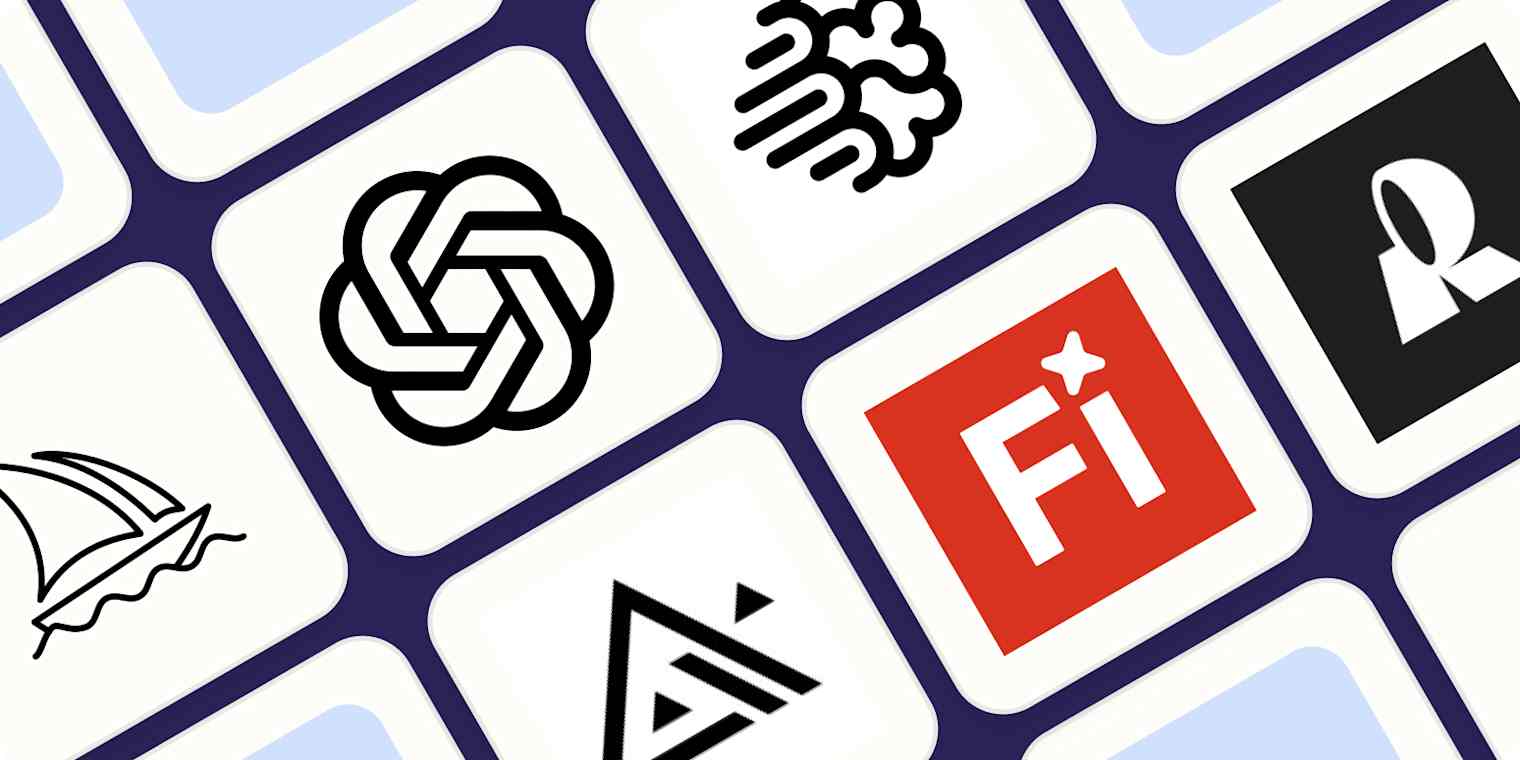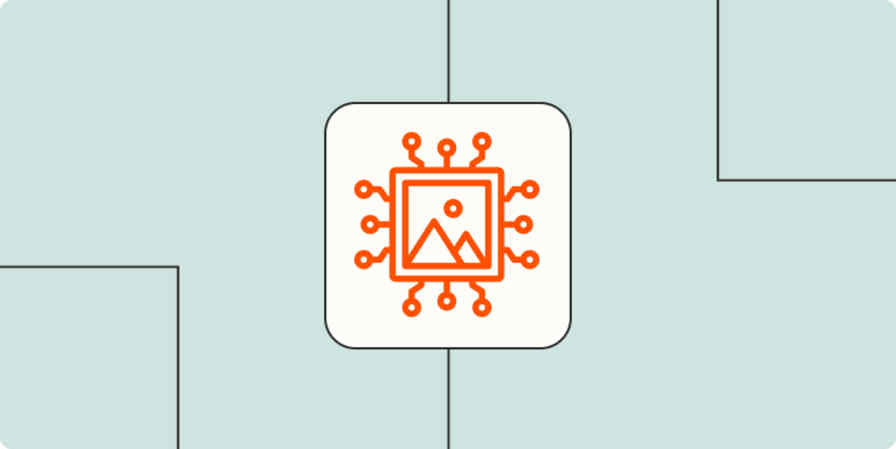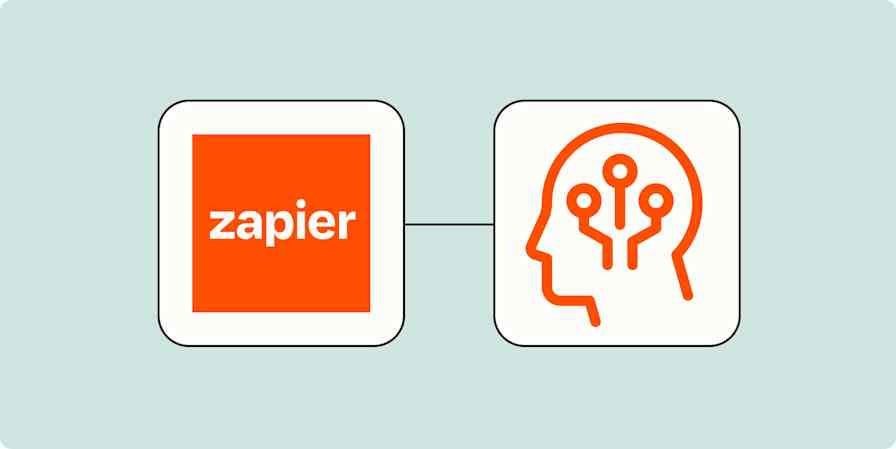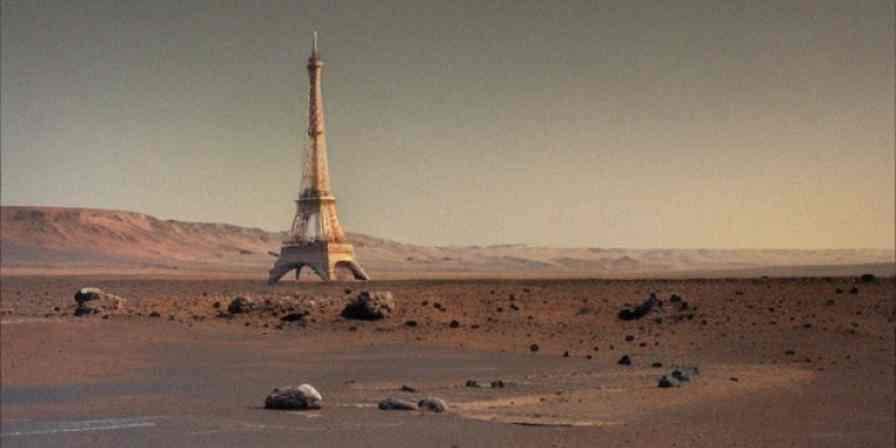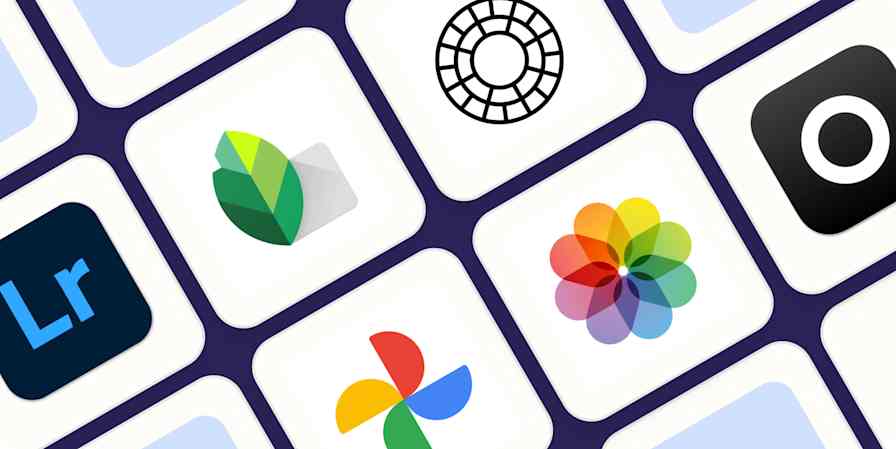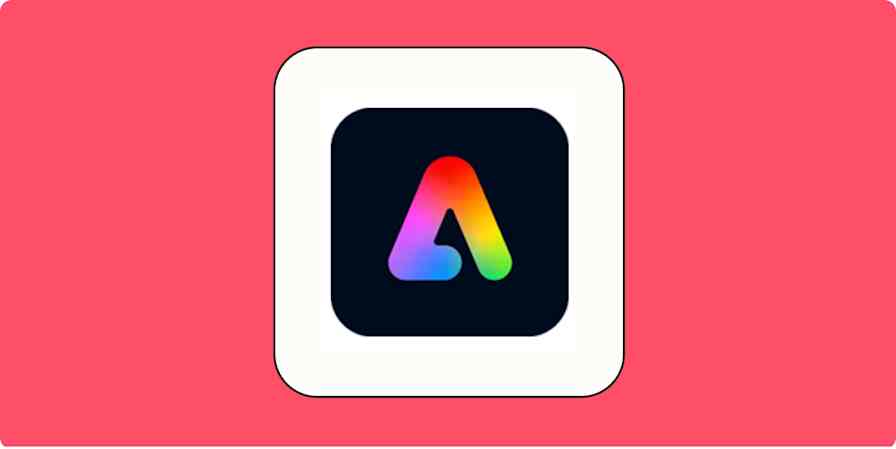AI image generators have been brewing (generating?) up a storm for the last couple of years. If you've been on social media, watched prime time news shows, or read a magazine, AI-generated images have been impossible to miss. These kinds of AI-generated images are everywhere, and sometimes you won't even realize. If you want to join in the fun, or add some AI-powered features to your business workflows, the apps on this list will give you what you're looking for.
I've been writing about AI image generators since Google Deep Dream in 2015. That's about as long as anyone outside of a computer science lab has realistically been thinking about these tools, and I'm really excited by how far they've come.
I'm going to try to avoid the thorny discussions around artistic merit, whether or not these tools are replacing or augmenting artists, and copyright infringement in training data, at least where I can. Instead, I'll focus on the fact that these AI image generators can now produce excellent results from a wide range of text and image prompts.
It's worth taking a few hours to play around with one of these text-to-image AI apps—even just so you can appreciate them from a technical perspective. Whether you like it or not, we're all seeing a lot of their output at the moment. And there will only be more to come.
The best AI image generators
ChatGPT (GPT-4o) for the best AI image generator overall
Midjourney for artistic results
Reve for overall prompt adherence
Ideogram for accurate text
Stable Diffusion for customization and control of your AI images
FLUX.1 for a Stable Diffusion alternative
Adobe Firefly for integrating AI-generated images into photos
Recraft for graphic design
How do AI image generators work?
All these AI image generators take a text prompt and then turn it—as best they can—into a matching image. This opens up some wild possibilities, since your prompt can be anything from "an impressionist oil painting of a Canadian man riding a moose through a forest of maple trees" to "a painting in the style of Vermeer of a large fluffy Irish wolfhound enjoying a pint of beer in a traditional pub" or "a photograph of a donkey on the moon."

Seriously, the only real limits are your imagination, the AI image generator's ability to comprehend your prompt, and any content filters put in place to stop plagiarism, copyright infringement, and bad actors flooding the internet with AI-generated violence or other NSFW content. (That Vermeer prompt used to work reliably, but some more restrictive image generators now block it because it uses a named artist.)
Most AI image generators work in a pretty similar way. Millions or billions of image-text pairs are used to train a neural network (basically, a very fancy computer algorithm modeled loosely on the human brain) on what things are. By allowing it to process near-countless images, it learns what dogs, the color red, Vermeers, and everything else are. Once this is done, you have an AI that can interpret almost any prompt—though there is a skill in setting things up so it can do so accurately.
The next step is to actually render the AI-generated image. The latest generation of AI image generators typically uses a process called diffusion—though OpenAI's latest foray into image generation uses a slightly different process called autoregression. In essence, the image generators start with a random field of noise and then edit it in a series of steps to match their interpretation of the prompt. It's kind of like looking up at a cloudy sky, finding a cloud that looks kind of like a dog, and then being able to snap your fingers to keep making it more and more dog-like.
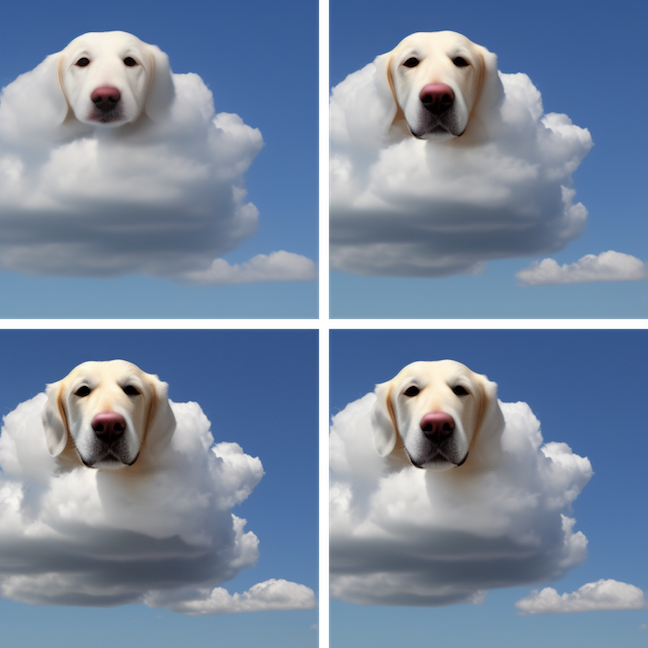
Before we dive in: I don't want to oversell things. What these text-to-image generators can do is very impressive, but they aren't likely to save you from ever having to do a product photoshoot again. If you just need some weird or unique images, they can really help. But if you're looking for something super specific, you're better off hiring a photographer—or licensing the exact image you want. Similarly, trying to use one to make a header image for a blog post can take a lot more time than just finding a header image for your blog through a stock photo site.
What makes the best AI image generator?
How we evaluate and test apps
Our best apps roundups are written by humans who've spent much of their careers using, testing, and writing about software. Unless explicitly stated, we spend dozens of hours researching and testing apps, using each app as it's intended to be used and evaluating it against the criteria we set for the category. We're never paid for placement in our articles from any app or for links to any site—we value the trust readers put in us to offer authentic evaluations of the categories and apps we review. For more details on our process, read the full rundown of how we select apps to feature on the Zapier blog.
There's a reason that AI image generators have become incredibly popular over the past few years: before that, they were pretty bad. The technology underlying them was incredibly cool and impressive, at least to research scientists, but the images they could output were underwhelming. Even the original DALL·E was more of a fun novelty than a world-shaking revelation when it launched in 2021.
Now that these text-to-image generators have been around for a while, there's some real competition between the different models. They've really increased in quality and can now even generate text somewhat accurately. If all you care about is the current "best" model, check out Artificial Analysis's Image Arena. But we've reached the stage where the top dozen or more models are all excellent, so other features and usability matter more than they used to.
So, to find the best AI art generators, I set some pretty strict criteria:
I was looking for apps that allowed you to generate AI images from a text prompt (and to a lesser degree, an image prompt). Tools that have you upload a dozen of your photos and then spit out AI-generated portraits are fun (and normally built using Stable Diffusion), but they aren't the kind of general-purpose image generators I was considering.
I was looking at the AI image generators themselves, not tools built on top of them. For example, NightCafe is an AI picture generator that has a great community and app, but it just enables you to use open source models like FLUX and Stable Diffusion, fine-tuned models based on various versions of them, the DALL·E 3 and Google Imagen APIs, as well as a handful of older generative models. It's worth checking out, but it doesn't meet my criteria for its own entry on this list.
Aside from all that, I also considered how easy each AI image creator is to use, what kinds of controls and customization options it provides (for things like AI image upscale), what pricing model it has, and most important of all: how good were the results? The best AI image generators are now far less likely to create weird or impossible-looking things.
I've been using and writing about text-to image generators since the original DALL·E launched, and about photography and art for more than a decade, so I'm pretty familiar with how all these tools work—and their various pros, cons, and bonkers behaviors. But writing this article was actually the first time I've put so many AI image generators head-to-head with the same prompts. The results were fascinating, and I'm delighted to say all the apps on the list offer genuine reasons to use them.
How to use AI image generation at work
Interested in AI, but not quite sure how you'd use it at work? Here are a few of the ways people are turning to AI image generation in their roles:
Generating hero images for blog posts
Creating social media posts
Generating slide decks and storyboards
Creating personalized images for customers
Learn more about how to use AI image generation at work.
The best AI image generators at a glance
Best for | Access options | Price | Parent company | |
|---|---|---|---|---|
Ease of use and overall quality | ChatGPT; API | Free with ChatGPT; fewer restrictions with ChatGPT Plus at $20/month | OpenAI | |
Artistic results | Web app; Discord | From $10/month for ~200 images/month and commercial usage rights | Midjourney | |
Adhering to prompts | Web app | 20 free credits/day; $5 for 500 credits | Reve | |
Accurate text | Web app | Limited free plan; from $8/month for full-resolution download and 400 monthly priority credits | Ideogram AI | |
Customization and control | NightCafe, Tensor.Art, Civitai, and lots of other apps; API; downloading it to a local server | Depends on the platform | Stability AI | |
Stable Diffusion alternative | NightCafe, Tensor.Art, Civitai, and lots of other apps; API; downloading it to a local server | Depends on the platform | Black Forest Labs | |
Using AI-generated images in photos | firefly.adobe.com, Photoshop, Express, and other Adobe tools | Limited free credits; from $9.99 for 2,000 credits/month | Adobe | |
Graphic design | Web app | Free for 50 credits/day; from $12/month for full features | Recraft |
The best AI image generator overall
GPT-4o (ChatGPT)

GPT-4o pros:
Incredibly easy to use and a best-in-class model
Included with ChatGPT Plus, so you get a lot of AI for your money
Integrates with Zapier
GPT-4o cons:
Very slow
Controls can be hit and miss
$20/month is pricey if you don't want the rest of ChatGPT with it
After OpenAI's DALL·E model kickstarted the text-to-image boom, it seemed to take a backseat to the company's language models. DALL·E 2 and DALL·E 3 were good when they debuted, but were both quickly overtaken by other models. But now OpenAI is back with a bang. GPT-4o, the multimodal model that powers ChatGPT, can now natively generate images.
GPT-4o is one of the best image generators available. It's also ridiculously easy to use: tell ChatGPT what you want to see, and it'll create the image. Unfortunately, because GPT-4o uses an autoregression model instead of diffusion, it's much slower than the other image generators on this list—and it only generates a single image. If you're only occasionally generating a few images, this isn't a big deal, but it's worth noting.
It's really solid across the board: accurate text rendering, easy editing, understanding of numbers and position, the list goes on. GPT-4o's best feature, though, is what's caused it to go viral. It's great adhering to image prompts (and it's pretty good at adhering to regular prompts, too). If you upload a photo and direct it to create the image in the style of Picasso, Vermeer, or, yes, Studio Ghibli, it will do an exceptional job. It's also pretty good at incorporating feedback—ask it to change just one element of your image and it generally will. Compared to DALL·E 3 (which you can still use as a GPT), it's a huge improvement.
In addition to GPT-4o image generation through ChatGPT, OpenAI offers an API, which means you can connect ChatGPT to Zapier to do things like automatically create images from Google Forms or HubSpot responses—or any other apps you use. Learn more about how to automate ChatGPT, or get started with one of these pre-made templates.
Create images with DALL.E based on Slack messages and send as a channel message
Generate images based on Google Form responses and save them in Google Sheets
Generate OpenAI (DALL.E) images from new Airtable records and send as an email
Zapier is a no-code automation tool that lets you connect your apps into automated workflows, so that every person and every business can move forward at growth speed. Learn more about how it works.
GPT-4o pricing: Free users can access it, but if you don't want to run into limits, GPT-4o image generation is included as part of ChatGPT Plus at $20/month.
The best AI image generator for artistic results
Midjourney

Midjourney pros:
Consistently produces some of the best looking AI-generated images
The community is a great way to get inspiration
Midjourney cons:
Images you generate are public by default
For a long time, Midjourney produced my favorite results of all of the image generators on this list. Other apps have finally caught up with its quality, but it still produces some of the most coherent, visually appealing, and interesting results with great textures and colors. It's telling that it was the first AI image generator to win an art competition.
Best of all, Midjourney now has an actual web app. You no longer have to access it through Discord—though you can if you want.
Still, as you can probably guess, Midjourney isn't totally free of quirks: by default, every image you generate is posted publicly on Midjourney's Explore page and can be viewed on your profile. It gives everything a cool community aspect, but it means that anyone who cares to look can see what you're creating. While not necessarily a problem for artists, this might be a dealbreaker if you're looking to use Midjourney for business purposes.
If things still sound a bit confusing, don't worry. Midjourney's help docs are really good and walk you through getting started with both the web app and Discord, and they show you how to control all its various features, from selecting model versions and upscaling to using character references and its personalization tools. Once you understand the different options, the results you can get are genuinely amazing.
Midjourney's free trials are currently suspended because of the overwhelming number of people trying to use it, but they're occasionally reinstated for a few days. If you miss a free trial window, the Basic Plan starts at $10/month and comes with 3.3 hours of GPU time per month, or around 200 images. You also get the option to buy additional GPU time, and you can use your images commercially.
Midjourney pricing: From $10/month for the Basic Plan that allows you to generate ~200 images/month and provides commercial usage rights.
Read more: Midjourney vs. DALL·E 3
The best AI image generator for adhering to prompts
Reve

Reve Image 1.0 pros:
Great prompt adherence
Free plan plus affordable credit system
Reve Image 1.0 cons:
Images you generate are public by default
Reve Image 1.0 is a new image model that essentially came out of nowhere in March 2025. It instantly jumped to the top of Artificial Analysis's leaderboard—until it was replaced by GPT-4o a few days later. Still, Image 1.0 is an incredibly powerful image generator with best-in-class prompt adherence.
In plain English, that means Reve Image 1.0 is able to stick closely to the prompt you give it. If you ask for, say, an image with a warrior holding a sword and a wizard holding a staff, that's what you'll get—not a warrior with a staff and a wizard with a sword. This kind of adherence has been a struggle for image generators, especially as prompts get longer and more complicated. I was pretty blown away by just how many details Image 1.0 could manage.
On top of that, Image 1.0 is great with text, different styles, and photorealism. Really, the only area it falls short is with editing. While you can edit a prompt or instruct the model to do something differently, it isn't as effective as GPT-4o or Midjourney at incorporating these changes.
Reve Image 1.0 also represents a return to credit-based pricing, which had fallen out of vogue. You get 100 free credits to start and 20 credits per day. Packs of 500 credits cost $5. Each credit is good for one image, though be warned: on the default settings, you generate four images for every prompt.
Reve Image 1.0 pricing: Free for 20 credits per day; additional credits are $5/500
Best AI image generator for accurate text
Ideogram

Ideogram pros:
Great looking AI-generated images—and among the most accurate text of any app
There's a free plan
Ideogram cons:
Images you generate are public by default
Although they're getting better, most AI image generators still struggle to generate text correctly—the diffusion process just doesn't lend itself to precisely rendering letters. Ideogram, though, has cracked it. Its latest 3.0 algorithm is able to accurately and reliably include text along with any generated image.
What makes this more impressive is Ideogram is also one of the best image generators overall. It has an intuitive web app and some nice features like an image editor and the ability to use any image as the basis for a new one. There's a new Batch Generator that allows you to upload a spreadsheet with a list of prompts, and it's beta testing a canvas feature that allows for more complex designs. In my testing, it was up there with Midjourney in terms of quality.
Ideogram even has a free plan. With it, you're limited to 10 credits a week, you have to wait a few minutes for a generation to start, and you only get Ideogram's basic features, but it's still a great way to get a feel for one of the best AI image generators available.
Ideogram pricing: Limited free plan; from $8/month for full-resolution download and 400 monthly priority credits.
Best AI image generator for customization and control
Stable Diffusion

Stable Diffusion pros:
Widely available across AI art generator platforms
Affordable, customizable, and super powerful with generally great results
Stable Diffusion cons:
The company behind it is maybe collapsing
There's no one easy option for using it
Unlike Midjourney and Ideogram, Stable Diffusion has an open license. This means anyone with the requisite technical skills can download some versions of it and run them locally on their own computer. It also means that you can train and fine-tune the model for specific purposes. For the past couple of years, almost all the services that use AI to generate artistic portraits, historical portraits, architectural renders, and everything else use Stable Diffusion this way.
But this kind of open setup can also mean chaos. And that's exactly what's happened with Stability.ai, the company that was formed by some of the researchers who developed Stable Diffusion. In 2024, it was on the verge of collapse, its latest model and licensing terms had been heavily criticized, and most of the research team had left to form a new company (which I'll talk about next).
While Stability AI seems to have weathered the crisis for now, all this puts Stable Diffusion in a weird place. The existing versions are still some of the best models available, there are countless fine-tuned versions that make it even better for specific uses, and it's wildly popular—but I'm not sure for how much longer any of this will remain true. The latest version, Stable Diffusion 3.5, is a great model, but it's not as popular or widely available as the earlier models.
The best (or at least most stable) way to use the most popular versions of Stable Diffusion is through an image generation tool like NightCafe, Tensor.Art, or Civitai—though you can find lots of other apps that will give you access to it. A lot of these platforms even give you a few free credits so you can try it out before paying. One word of warning, though: some of these platforms don't have the kind of content moderation that's typical on larger social sites. You might see some weird and NSFW things.
If you want to avoid all that or have total control, you can always download Stable Diffusion and run it locally.
Stable Diffusion pricing: Depends on the platform, but many offer free credits so you can try them out.
Read more: Stable Diffusion vs. DALL·E and Midjourney vs. Stable Diffusion.
Best Stable Diffusion alternative
FLUX.1

FLUX.1 pros:
From the team behind Stable Diffusion—but without the drama
Powerful and open
FLUX.1 cons:
New and not as widely available as Stable Diffusion
As Stability.ai started collapsing, a significant portion of the team left the company to found Black Forest Labs. Now, they've released their first series of text-to-image models: FLUX.1.
In my testing, FLUX.1 is better than any version of Stable Diffusion that's widely available. It's also increasing in popularity and being embraced by the AI art community.
Right now, if you're looking to get into open AI image generation rather than just using one of the simpler text-to-image tools, I'd suggest experimenting with FLUX.1 over Stable Diffusion. FLUX.1 Schnell is released under an open Apache 2.0 license, while the larger FLUX.1 is open for non-commercial use.
Like Stable Diffusion, the simplest way to use FLUX.1 is through online AI art generators like NightCafe, Tensor.Art, and Civitai. Sign up for a free account, give it a go, and compare it side by side with some of the other models. But again, be warned that the content on these sites may not be entirely SFW.
FLUX.1 pricing: Depends on the platform, but many offer free credits so you can try them out.
Best AI image generator for integrating AI-generated images into photos
Adobe Firefly
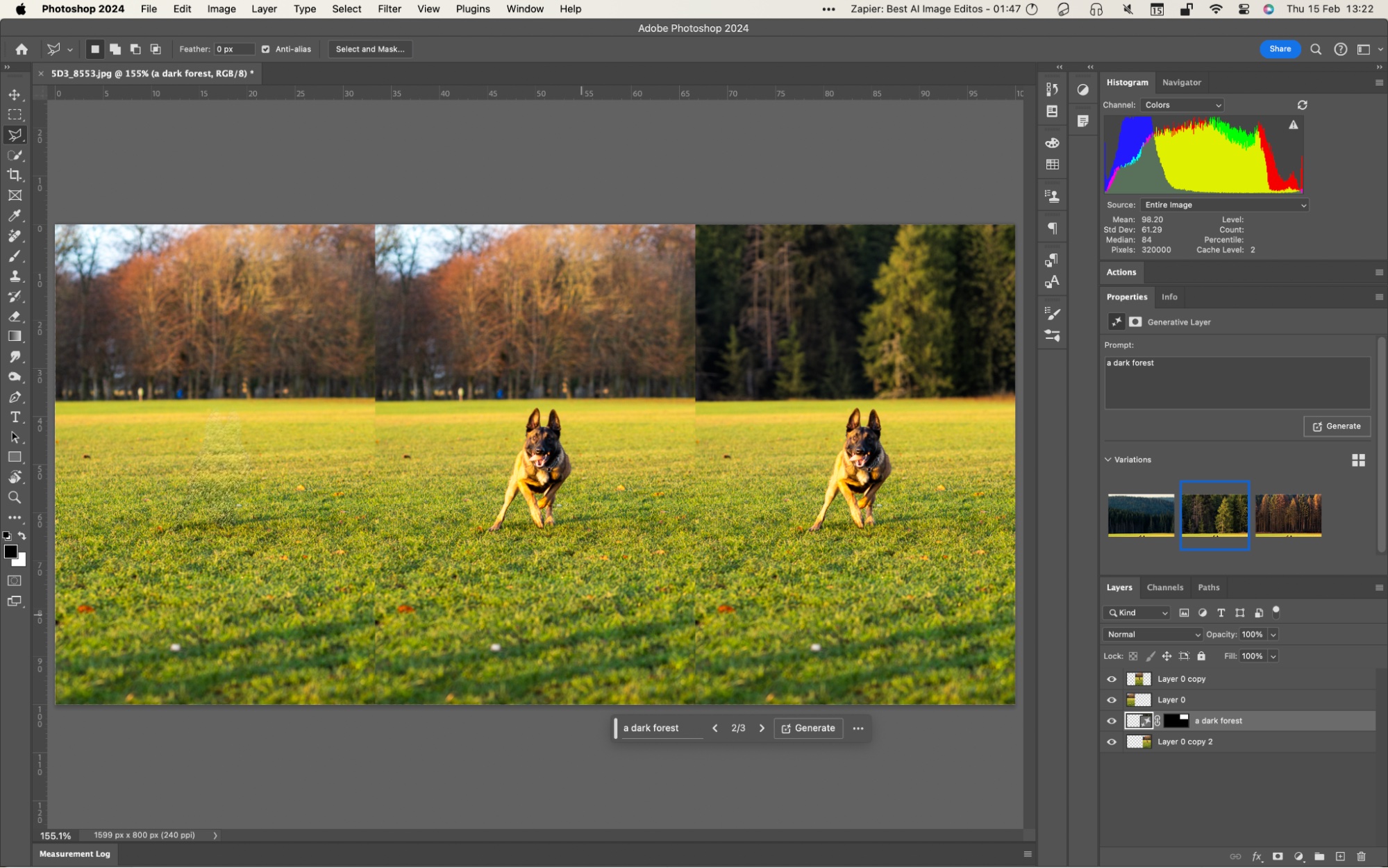
Adobe Firefly pros:
Integrates well with Adobe's apps, especially Photoshop
Powerful when it's matching an image
Adobe Firefly cons:
Not the best as a pure text-to-image model
Adobe has been building AI tools into its apps for more than 15 years, so it should be no surprise that it has one of the most powerful text-to-image generators—at least in terms of how it integrates with other tools. You can try its AI model, Firefly, out on the web for free or through Adobe Express, but it's at its best in the latest version of Photoshop.
Firefly has a few tricks up its sleeve. In addition to being capable of generating new images from a detailed text description, it can create text effects from a written prompt (think, the word "TOAST" written with letters that look like they're made from toast), recolor vector artwork, or add AI-generated elements to your images. You can test all these out through the web app, but it's that last feature where Firefly stands out.
Taken purely as a text-to-image generator, Firefly's results can be pretty hit and miss. It can match the best image generators like Midjourney for some prompts, but for others, I question what it was aiming to do. On the other hand, its integration with Photoshop, the industry standard image editor, is next level.
The two best features are Generative Fill and Generative Expand. With Generative Fill, you use Photoshop's regular tools to select an area of your image, and then, just by clicking a button and typing a prompt, you can replace it with something else. With Generative Expand, you can add to the outside of your image. Crucially, both tools understand the context of your image. In the screenshot above, you can see that Photoshop has matched the depth-of-field blur for the forest I added using Generative Fill. It looks cohesive.
As much as DALL·E and Stable Diffusion have started the conversation about image-generating AIs, Adobe's Firefly is the first implementation of an AI photo generator that really hints at what's to come. It isn't a party trick but a tool that's available to the millions of professionals who use Adobe apps every day.
Firefly pricing: Limited free credits; from $9.99 for Firefly Standard with 2,000 credits/month; Photoshop is available from $19.99/month as part of the Creative Cloud Photography Plan, which comes with 500 generative credits.
The best AI image generator for graphic design
Recraft

Recraft pros:
One of the most powerful and usable AI image generators
Graphic design features are second to none
Recraft cons:
More complicated to use than some of the other apps
Recraft is probably the most impressive app on this list. Its model is excellent and able to generate whatever you want, from photorealistic images to interesting logo designs. But it's the tools that Recraft has built around its model that really make it stand out.
Here's one example. Recraft allows you to create image sets that all fit the same style and color panel from a single set of prompts. You have all the style, color, and controls you need to dial things in, and it does an exceptional job right off the bat. Once you're happy with your images, you can export them as JPGs (fine), PNGs (better), or SVGs (amazing). Instead of being limited to small individual images, right from Recraft, you can create matching scalable design elements.
On top of that, you can use Recraft to create product mockups that combine multiple AI elements, in-paint and out-paint to add elements and combine images, adjust images and AI-generated work, remove backgrounds, and so much more. It's got collaboration tools, a great workspace, and you can export your work to other apps like Photoshop or Illustrator. It's a real continuation of what Adobe has done integrating Firefly into Photoshop.
Recraft Pricing: Free for 50 credits/day and limited features. From $12/month for Basic with 1,000 credits/month, commercial rights, and more artistic controls.
Other AI image generators worth trying out
Over the past year, the overall standard of image generators has really improved. There are now a dozen different models that are almost equivalent in quality. I feel the seven above are the best choices for most people, but there are a handful of other apps that warrant mentioning:
Google Imagen 3. Google's Imagen model is really great, and if you already pay for Google Gemini, it's the first model you should look at.
Generative AI by Getty. Designed to generate commercially safe images, Generative AI by Getty is...fine. If you need images with zero commercial risk, it's worth a look—but the legal system doesn't seem to care about companies using images from Midjourney, Ideogram, or DALL·E.
Leonardo.Ai. In addition to offering FLUX, image creation tool Leonardo.Ai has developed its own Phoenix model. It's a solid platform that just lacks a few features.
DALL·E 3. DALL·E 3 is still available as a GPT. If you've got a soft spot for it, you can keep using it, but it's actually considered a legacy model now.
Luma Photon. Luma Photon is another great model, though I found the Dream Machine app that uses it a bit too offbeat.
Playground. Playground is great for creating designs, but its reliance on a template system meant I felt it was a little out of scope for the list.
MiniMax Image-01. Image-01 is doing really well in Artificial Analysis's leaderboards, though it's only available as an API. If you're a developer, it's worth a look.
If you want a laundry list of every AI image generator out there, including those that are built on top of all the models I've talked about, I made that too. It includes more than two dozen image generators: some are built into other tools, like AI writing apps, photo editing apps, or stock photo sites; some let you select from multiple models; and each one differs on how it approaches AI image generation. So if none of the apps on this list feel natural to you, check out my list of the top AI art generators, and see if anything stands out.
How to use an AI image generator
Ok, so you know what the best options are, but...now what? The team at Zapier has put together a bunch of resources to help you understand how to use these tools—and put them to work.
First, tutorials and walkthroughs for some of the best AI image generators:
Plus, a guide for how to write effective AI art prompts, so you can get what you're looking for faster (and better) when generating images.
Once you've got the basics down, it's time to use these tools for more than just creating wacky pictures. Here are some tips for how to use AI image generators at work.
And finally, you can automate your AI image generators, so they do their magic behind the scenes and connect to all the other apps you use.
The legal and ethical implications of AI-generated images
AI-generated images are everywhere now, but that doesn't mean we shouldn't be asking questions about how they should (or shouldn't) be used.
There aren't clear laws in place surrounding AI-generated images. And that goes for both sides of the coin: the U.S. Copyright Office suggests that AI-generated content isn't copyright-protected without some kind of significant human input to the process, and there aren't rules to protect artists whose work was scraped for AI training. (That's why Firefly was trained on licensed images and public domain content only.) They've reaffirmed this stance, and the courts have sided with their interpretation.
You're not likely to get into trouble for using AI-generated images for a few social media posts or blog hero images, but because there's no line drawn in the sand yet, it can be risky to develop an entire strategy around AI-generated art. (For what it's worth, Hollywood seems to be quietly using it.)
Then there's the issue of bias. As of now, AI has a lot of the same biases as humans, and that can lead to everything from the portrayal of stereotypes to harmful content. I experienced this myself with the outputs I got from some of the apps while testing them, though other tools take deliberate steps to add diversity to the images they generate. It's up to us as humans to avoid it by reviewing AI-generated content for bias and refining our prompts to eliminate that bias as much as possible.
What's next for AI image generators?
AI image generating is a rapidly evolving space—and more powerful models are available each time I update this article. (I literally updated the article six weeks ago, and three new or upgraded image models dropped, so I had to update it again.) It's wild how good text-to-image models like GPT-4o, Reve, Midjourney, Ideogram, and FLUX.1 are getting at rendering tricky concepts repeatedly. While they're still a somewhat niche tool now, if they continue getting better at this pace, they could really shake things up.
Related reading:
This article was originally published in March 2023. The most recent update was in May 2025.
